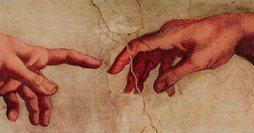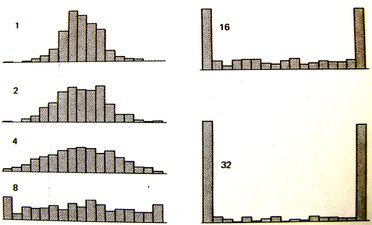KEPLER-SCIENCE
Origin of biodiversity
There's an enormous biodiversity on Earth - Beetles being by far the largest group of animals. Only look at the great variety in the classical model of the Ladybird: different numbers of black dots on a red background, other colors for the dots or the background, unicoloured or striped or ...besides all the other Beetle-models in a huge variëty.
Where does all this biodiversity come from? It's easy to see that we can discern a number of basic models like grasses, beetles, midges, snakes and cats. Within each of these model we sometimes see a lot of variation, which leads us to two questions:
- Where do the Basic Types (models) come from?
- What's the origin of al the variation within the Basic Types?
In other words: how far does kinship go? And: does kinship also mean common descent?
Speciation and the origin of diversity
It seems to happen: new species coming into existence. We have lots of observations which point towards this micro-evolution or variation. Two main options seem to be open:
- Isolation of small populations can lead to genetic drift. Just by chance some variety in the gene pool of this populations gets lost. In a way it is degeneration: loss of information. When meeting the original population they are not recognised and drift away further.
- Sexual selection could also lead to reproductive isolation and speciation.
One of the big questions is to what extent mutations are important for speciation. For the options mentioned above the answer seems to be no. But there are some types of mutations who might enhance variation and stimulate specation: see the DNA page for more. And both the monophyletic and the polyphyletic model have place for both of the speciation mechanisms.
Macro-evolution
Here we draw the line. Monophylists assume all life is related, descending from simpler forms of life. They have to assume new traits came into existence because for new models (basic types) innovation is necessary. Mutation is an option, but it almost always leads to loss of information and hardly ever is beneficial. How new traits really could appear still is a kind of mystery. Polyphylists state that many basic types (probably on the level of families) came into existence separately, branching out by variaton. They deny macro-evolution
Kinship
Four ways seem to be open to establish relations between species:
- Similarities in the build of the body
- Similarities in behaviour
- Biochemical similarities
- Crossing experiments.
Only the last one can really establish species borders (by definition), but the other ones can give a good support. Similarities can be caused by different things: common descent, common use and common creator.
LINKS:
- Wikipedia on: genetic drift and mutations
- Read about: cats as basic type
- More about: mutations
- For more Dutch links go to 'soorten'
- More on DNA: how it works, about mutations and on jump-DNA
- The problem of convergence.
- About a comparison between a common descent model and a dependence graph model. You can also read the original article in Biocomplexity.
Loss of alleles will almost always happen in a small population, as this simulation shows: after 32 generations the vast majority of the 100 groups of 8 individuals either lost the dominant or the recessive allele - just by chance



